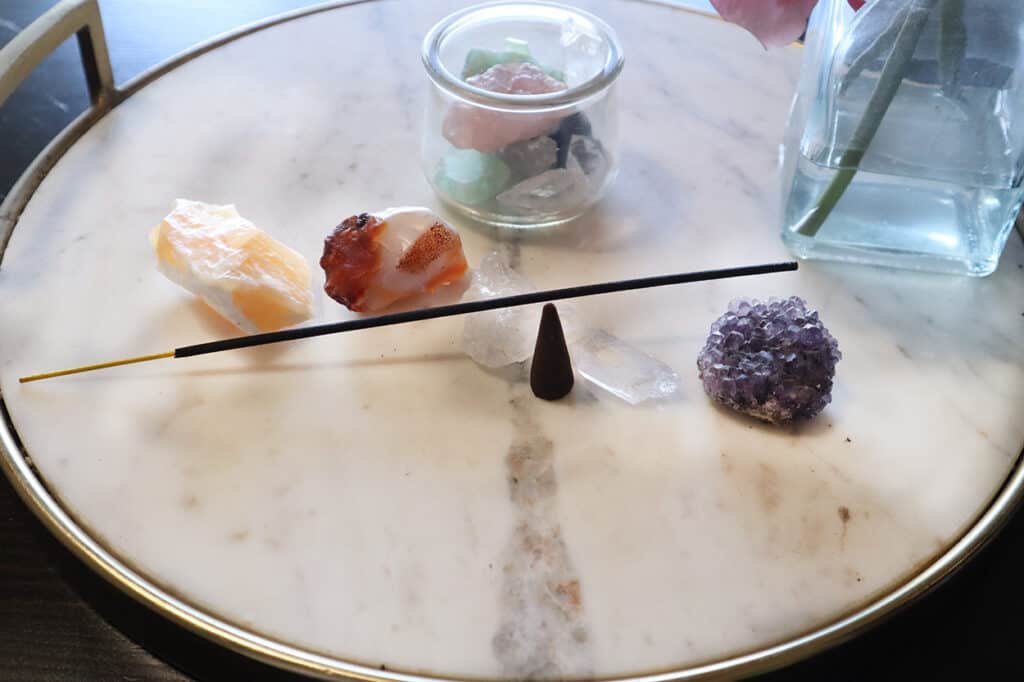While incense is typically used for cleansing negative energies or protecting against them, they do have some downsides at times. Incense can cause headaches from the smoke or scents attached to them. But this can be prevented with good ventilation and proper incense burning techniques.
Why Does Incense Cause Headaches?
Incense headaches tend to feel like a pounding headache, typically located around the temples and into the forehead. They’re caused by scents, smoke, or excess burning.
Smoke
Smoke inhalation can lead to headaches because it typically decreases the amount of oxygen you’re intaking. Certain incense and burners can increase the amount of smoke kept in the area. Wood incense and backflow incense burners are the biggest culprits of the increase in smoke.
Scents
Incense scents play a big impact on how you want to use your incense. But certain scents may cause issues for individuals that have a sensitive nose. The best way to test if the scent is causing the headaches is to simply try another scent that’s milder or toned down compared to the one you’re using.
Some of the stronger scents include Nag Champa, Patchouli, and Clove. Easy to handle scents include Lavender, Lemongrass, and Lemon.
Excess Burning
Incense are a great tool for cleansing, protecting, and manifesting. But burning incense multiple times a day for long periods of time can lead to adverse health effects. Sometimes completely defeating the purpose of burning them.
Optimally, you’ll want to only burn incense one or two times a day to avoid excess smoke, scents, and ash. You may also need to switch up the type of incense you’re burning. If incense sticks are burning for too long, consider switching over to incense cones.
How Do You Prevent Headaches When Burning Incense?
Avoiding incense headaches is relatively easy. It starts with learning how to burn incense properly. This includes picking the right scent, the right type of incense style for you and then making sure there’s plenty of natural ventilation.
Proper Ventilation
Properly placing your incense in a well-ventilated area is a key part of cleansing the home as well as keeping you healthy. The most common area to burn incense is typically next to an open window or screen door. These areas offer an abundance of ventilation for the smoke to easily escape the home.
Natural or No Scent Incense Sticks
Some incense sticks are filled with artificial ingredients that can be the source of our headaches. You can choose to switch to naturally scented incense sticks, mildly-scented options, or even no scent incense sticks. Do note that non-scented incense sticks will still smell like smoke, but they won’t offer the intense fragrance on top of the smoke.
Limit Burn Time
If you find the headache sets in place after more than 30 minutes of burning the incense, then you might need to switch up the type of incense you’re using. Incense cones typically burn for around 30 minutes whereas incense sticks tend to burn for around an hour on average.
It’s important to let the incense fully burn through so you can take full advantage of the cleansing and healing properties. Cutting an incense burn short may negate these effects.
What Can You Do To Cleanse and Protect Yourself Without Incense?
In the event that incense still causes headaches, even with taking the proper precautions, then you’ll want to switch over to crystals. Crystals are excellent at helping redirect negative energies flowing through the home. Though crystals do tend to hold on to these negative energies, so you’ll need to cleanse them regularly to ensure they’re always working.

